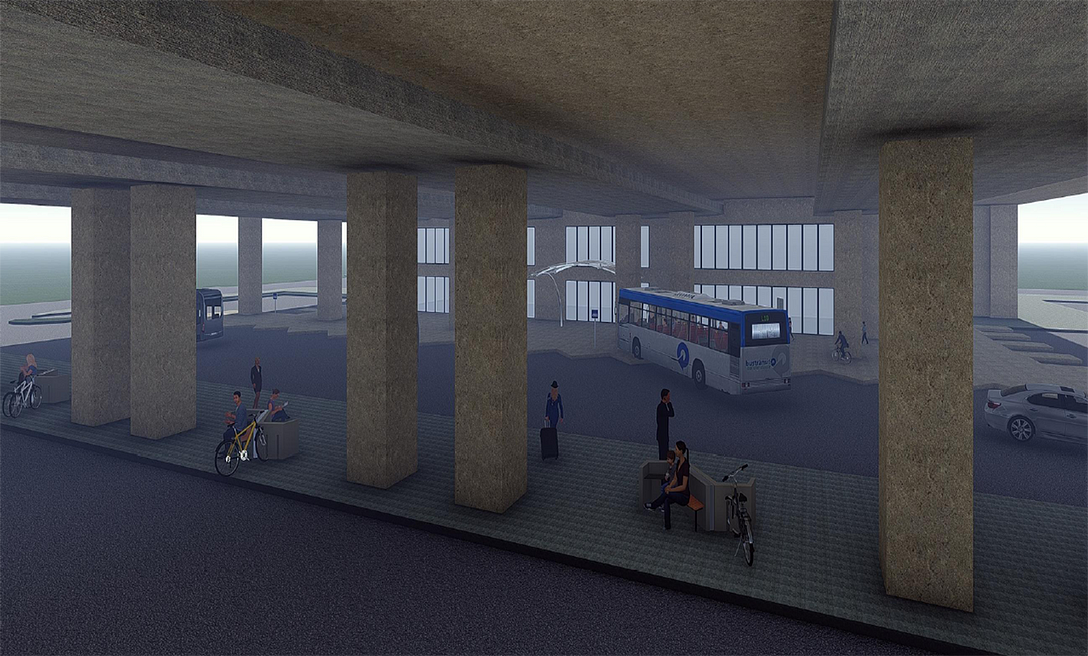Hello again! It’s been some time since our last blog on public spaces, but we are back and ready to share our new initiative, this time on how we are innovating Skopje’s public mobility infrastructure.
For many people in our city the bicycle has been promoted to the primary transport method. This is, in large part, due to global warming making savvy environmentalists ditch their greenhouse-gas-emitting vehicles in favor of cycling — which in turn became the proponent of a cleaner, healthier environment.

As the landscape of the city is ever evolving, it is more than obvious that not all new additions accommodate the budding new interests of the people: chief among these being cycling. Apart from setting up the barest necessities, the powers-that-be have largely overlooked the incipient cycling infrastructure.
Our main goal was to encourage citizens to use bikes more actively by strengthening the infrastructure for alternative transport and promotion of intermodal transport.
Our attitude towards meeting cyclist inadequacies was fostered in cooperation. We listened to passionate enthusiasts and decided that a specialized biking parking spot, in a mutually agreed upon location, would serve their needs best.
And what is better location for that, than the Transport center itself?

An Inclusive Approach
After agreeing on the location, we realized that with any initiative that tries to innovate from the ground-up, it begins and ends with those affected. And by that, we do not only mean the cyclist, but the urban designers and architects, citizens that can be potential bike users, the public sector professionals working on urban planning and mobility issues.
All these groups are in someway affected, and that is why is of crucial importance to further demonstrate the benefits of co-creating in the process of finding solutions to urban challenges.
We believed that by providing space/platform for all these groups to co-design and co-create together will not only lead us to a right solution, but will shift the thinking around the design and can inspire a long-term change on a systemic level.
Once we reached an accord about the need, we swiftly arrived at the method. thus we started with a workshop held in the Skopje Lab offices to determine the type and the content of public call we would make. This workshop focused on inclusivity. We invited a diverse group of officials and experts from many different spheres of influence, as well as passionate cyclists, to develop the criteria that would lead the project forward.
This approach and openness from our side proved adequate: the call’s reach was vast and effective. Productive collaboration and a chance to have their voices heard on a subject they genuinely care about drew many hopefuls to the task.
Above all we wanted to promote collaborative and innovative thinking from different concerned groups. This multidisciplinary approach assured many different design proposals. Everyone was emboldened to share their expertise and ideas, which lead to the participants seeing their views appreciated and taken seriously. The generated feelings during the design process were ones of trust and collegiality.

Trust in the Process
Architects, designers, movie directors, creatives. Our transparency of the process, and the promise of co-creation, was the glue binding these people, regardless of discipline, to join in an initiative they all believed in.
What enforced this transparency was a belief that an open discourse was beneficial for all. The criteria by which we chose the participants, and the winners of the initiative, were fully disclosed and available, creating an air of openness refreshing for everyone involved.
The spirit of teamwork was in the air, and the yearning participants were eager to begin. The process lasted 2 months. Started with an introductory workshop to engage and disclose in detail all the aspects of the work needed and ended with a public presentation of the designs. The time in between was used for ethnographic research and work on the design. In this time 11 teams created: module specifications, location-based design and budgetary requirements for the creation of their idea.
The design process reiterated the need for working together. Experimentation was encouraged; we sought new ambiances and vibes that would enhance the city’s mythos. And the free-flowing, cooperative nature of the project lent itself to all the open thinkers that decided to join.
Click here to see what each team ultimately came up with, or check the video from the public presentation here.

Results Speak for Themselves
As we previously mentioned, the teams proposed 11 amazing solutions; each adding its own creative unique take on an inviting parking spot for cyclists. The innovative methods used in this initiative spawned bonds of coequality that will endure to projects in the future.
Moreover, many youths took part to great effect. SkopjeLab gave them a platform to show that they have a voice in shaping this city. This inclusion also strengthened the ties between city officials and their citizens, proving that cooperation in these matters is not only wanted, but preferred, in creating results that we can all be proud of.

Lastly, with support of the GIZ, the City of Skopje and the affected municipality, the selected solution by will move to implementation in the months that follow. This commitment has also attracted potential partners from the private sector to aid SkopjeLab in the endeavor, and identified proposals for future activities that would help with the initiative in whatever shape or form.
The project is realized through financial and technical backing from the International German development agency — GIZ — through the active component of strengthening the development of a cycling infrastructure, the project “Future cities of southeast Europe” run by SmartUp — Social Innovation Lab, and the City of Skopje.



